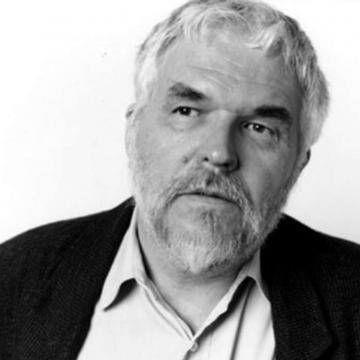Stan Brakhage (January 14, 1933 – March 9, 2003) was an non-narrative filmmaker. He is regarded as one of the most important experimental filmmakers of the 20th century. He worked with various kinds of celluloid: 16mm, 8mm, 35mm, and IMAX, and was a practitioner of what he referred to as 'pure cinema'.
Biography Brakhage was born as Robert Sanders in an orphanage in . Three weeks after his birth, he was adopted by Ludwig and Clara Brakhage and given the name James Stanley Brakhage.
As a child, he appeared on radio as a boy soprano before going to high school in and then dropping out of Dartmouth College after several months to make films. He was influenced by the writings of Sergei Eisenstein and the films of Jean Cocteau as well as the Italian neorealism movement. His first film, Interim (1952), was in the neo-realist style and had music by James Tenney.
In 1953, Brakhage moved to San Francisco where he associated with poets such as and Kenneth Rexroth. In late 1954, he moved to New York City where he met a number of contemporary artists, including Maya Deren, Marie Menken, Joseph Cornell, and John Cage.
Brakhage's films are usually silent and lack a story, being more analogous to visual poetry than to prose story-telling. He often referred to them as 'visual music' or 'moving visual thinking.' His films range in length from just a few seconds to several hours, but most last between two or three minutes and one hour. He frequently hand-painted the film or scratched the image directly into the film emulsion, and sometimes used collage techniques. For ''Mothlight'' (1963), for example, he taped moth wings, twigs, and leaves onto clear film and made prints from it. In the 1960s and 1970s especially, his life with his first wife Jane and their five children was frequently shown, though in a fragmented and interior way rather than as documentation.
Brakhage's work covers a variety of subjects and techniques. Window Water Baby Moving (1959) is a record of the birth of his first child, while 23rd Psalm Branch (1966-67) is a meditation on war that intercuts footage of Colorado, where he lived, with shots of World War II. Dog Star Man (1961-64), perhaps his most famous work, features a man climbing a mountain, shots of stellar objects and more footage of his wife giving birth. It is usually read as addressing the unity of creation. The same footage was also made into a much longer film, The Art of Vision. Works from his later periods include the four-part 'Faust Series' (1987-89), the four-part 'Visions in Meditation' (1989-90), 'Passage Through: A Ritual' (1991), and 'The Vancouver Island Quartet' (1991-2002). One of his last works was the thirty minute , 'Panels For the Walls of Heaven', the last of the four Vancouver Island films. He also completed several more collaborations with musicians, including two more works with music by James Tenney, 'Christ Mass Sex Dance' (1991), and 'Ellipses #5' (1998).
Brakhage wrote a number of books, including Metaphors on Vision (1963), A Moving Picture Giving and Taking Book (1971), and the posthumously published 'Telling Time: Essays of a Visionary Filmmaker' (2003). He often gave lectures at universities, museums, galleries, film festivals and so on. From 1969 he taught film history and aesthetics at the School of the Art Institute of Chicago and from 1981 taught at the in Boulder. He taught because, despite being the best known American avant-garde filmmaker, he could not make a living from his work.
Brakhage was diagnosed with cancer in 1996, and his bladder was removed. The surgery seemed successful, but the cancer eventually returned. He retired from teaching and moved to Canada in 2002, settling with his second wife Marilyn and their two sons in . Brakhage died there on March 9, 2003, aged 70, having made almost four hundred films in all. He believed, and his doctors confirmed, that the coal-tar dyes he used to paint his films prior to 1996 had caused his cancer.
Brakhage is revered as one of the most important filmmakers of the 20th century, and his work has had some small impact on mainstream cinema. The credits of the film , with their scratched emulsion, rapid cutaways and bursts of light are in Brakhage's style. The concluding credits to The Jacket are an homage, the background imitating his Mothlight.
Among Brakhage's students were Eric Darnell, the director of Antz, as well as the creators of South Park, Matt Stone and Trey Parker, and he is featured in their student film . The work of contemporary film and video artist Raymond Salvatore Harmon is often compared to Brakhage's abstract films. The opening track of Stereolab's album Dots and Loops, 'Brakhage', is also named after him.
The Academy of Motion Picture Arts and Sciences Film Archive is currently working on the restoration of Stan Brakhage's complete film output.
The films of Stan Brakhage are distributed in their original format by Canyon Cinema in San Francisco.
Source: Wikipedia

